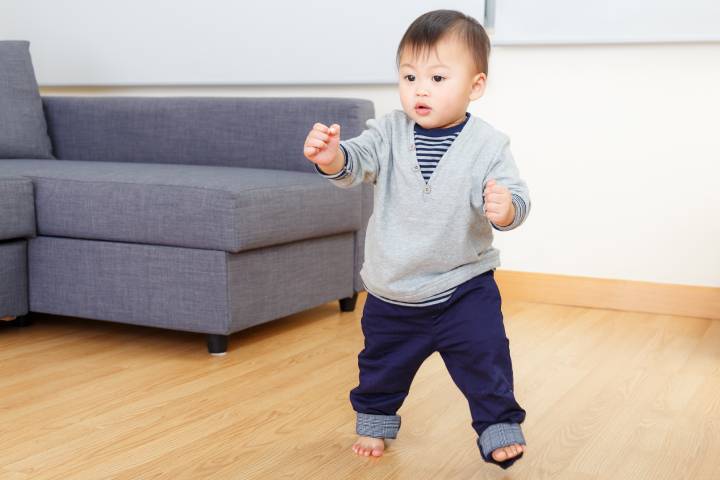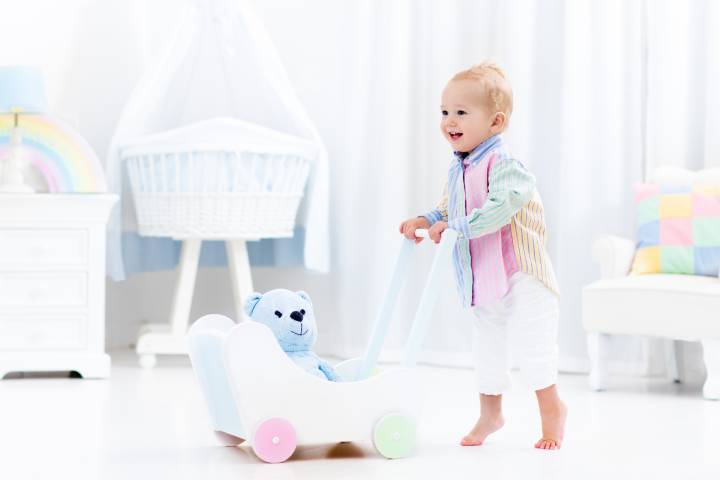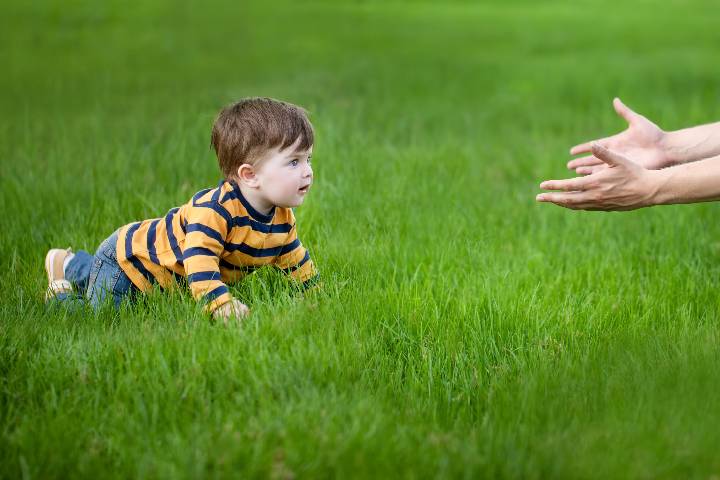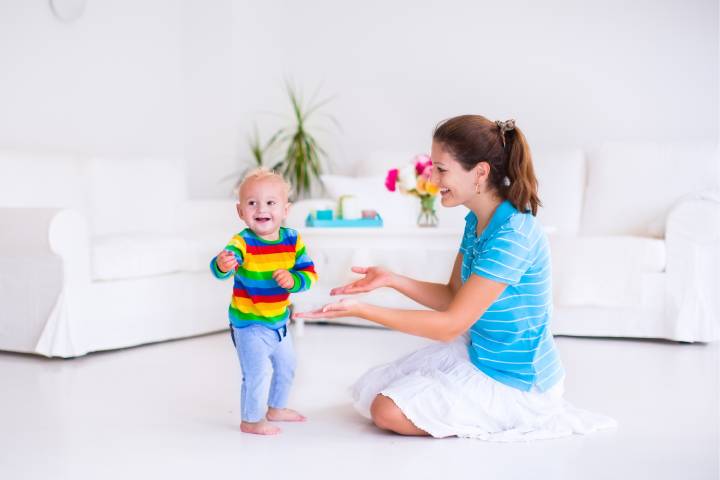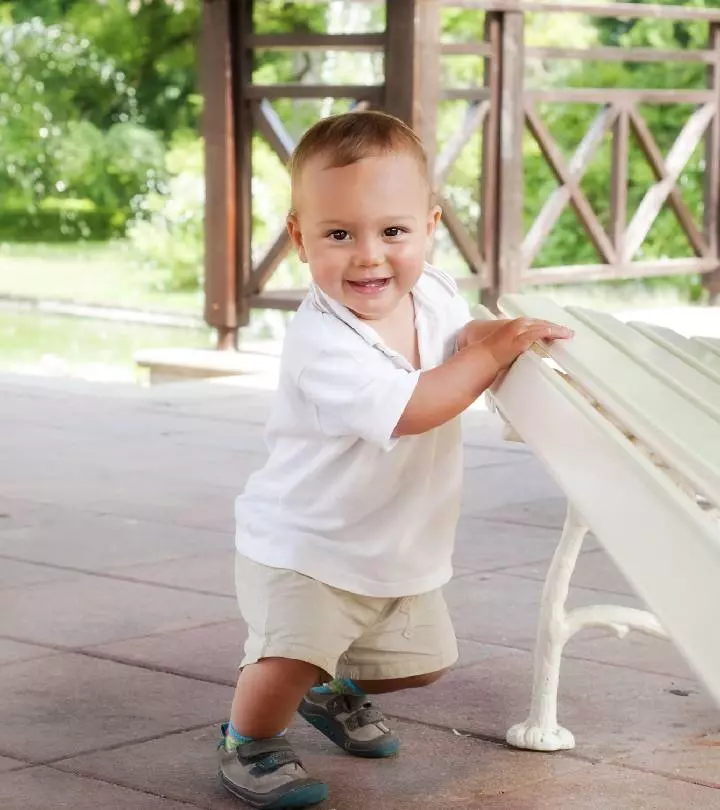
Image: Shutterstock
Hey there thrilled parents! Brace yourselves for a heartwarming moment as your little one gears up to stake the first step. It feels no less than a miracle when your little one takes those initial wobbly steps that mark a momentous milestone. In this article, we’re diving into the mysteries of when your precious bundle might start strutting, how to catch those readiness cues and ways to be their biggest supporters in this walking escapade. We will also discuss what to do if those first steps decide to take their sweet time. So, grab your cheering gear and get ready to revel in those sweet victories with your little mini walker! Read on to know more!
When Do Babies Generally Start Walking?
Image: Shutterstock
Ah, the big question on every parent’s mind! Generally, most babies start taking their first steps between 9 and 12 months, but remember, each little one dances to their own rhythm. Some may take their inaugural steps as early as 8 months, while others might wait until they’re closer to 18 months (1). It’s a diverse world out there, and your baby’s pace is as unique as they are.
How To Know If Your Baby Is Ready To Walk?
Image: Shutterstock
Detecting those subtle signs that your tiny tot is gearing up for walking is like catching the first notes of a catchy tune. Keep an eye out for these indicators:
1. Strong Core Muscles
If your baby can sit up without toppling over like a cute little teapot, their core muscles are gaining strength. This is a crucial foundation for standing and eventually taking those initial steps.
2. Pulling Up
Is your furniture getting a workout? When your baby starts using tables, sofas, or anything sturdy to pull themselves up, it’s a signal that they’re exploring the vertical world. It’s like their way of saying, “Hey, I want to see things from up here too!”
3. Cruising Along Furniture
Image: Shutterstock
Notice your baby shuffling along the edges of furniture like a pint-sized explorer? This cruising stage is a stepping stone (pun intended!) to walking. It shows they are testing their balance and gaining confidence in holding onto support.
4. Interest In Standing
If your little one is becoming more curious about standing and eagerly putting weight on their legs, they might be gearing up for the walking extravaganza. It’s like they’re preparing for the starring role in their very own standing ovation.
How Can You Help Your Baby Learn Walking?
Image: Shutterstock
Now that you’ve spotted the signs, it’s time to be the best cheerleader for your mini walker. Here are some simple ways to support them on this exciting journey:
1. Encourage Standing Play
Set up a safe and supportive space for your baby to practice standing. Offer enticing toys just out of reach to motivate them to stand up and grab their newfound treasures.
2. Hold Their Hands
Your baby might appreciate a helping hand (literally!) as they start taking those initial steps. Hold their hands and guide them gently, letting them feel the sensation of moving forward.
3. Invest In Stable Walkers
Image: Shutterstock
Consider using a stable baby walker to provide extra support. These nifty devices allow your baby to move around while holding onto a handle, building confidence and balance.
4. Create An Obstacle Course
Turn your living room into an obstacle course of cushions and soft toys. This not only adds an element of fun but also encourages your baby to navigate around obstacles, refining their motor skills.
5. Mirror Magic
Babies love looking at themselves! Place a baby-safe mirror in front of your little one during standing play. This not only captures their attention but also encourages them to engage with their reflection, making the standing experience more enjoyable.
6. Interactive Play
Image: Shutterstock
Incorporate interactive games while standing or cruising. Use colorful toys or play peek-a-boo to make the experience more engaging. These activities not only make standing fun but also contribute to your baby’s cognitive and social development.
What To Do If There’s A Delay?
No need to fret if your baby isn’t ready to join the walking club right on schedule. Remember, they’re on their unique path. Here’s what you can do:
1. Consult Your Pediatrician
If you notice a significant delay in your baby’s walking progress, it’s always a good idea to check in with your pediatrician. They can assess your baby’s overall development and offer guidance or interventions if needed.
2. Provide Extra Support
Image: Shutterstock
Keep offering support and encouragement. Sometimes, all your little one needs is a bit of extra time and reassurance. Celebrate each attempt, no matter how small, and continue to create a safe environment for exploration.
3. Celebrate Other Milestones
While waiting for those first steps, celebrate other milestones your baby achieves. Whether it’s babbling, crawling, or mastering the art of waving, every achievement is a step forward in their unique developmental journey.
The world of baby walking is a delightful stage filled with anticipation and joy. Watch for those signs, lend a helping hand, and savor the magic of those first unsteady steps. Your little one is on their way to conquering the walking world, one adorable step at a time.


